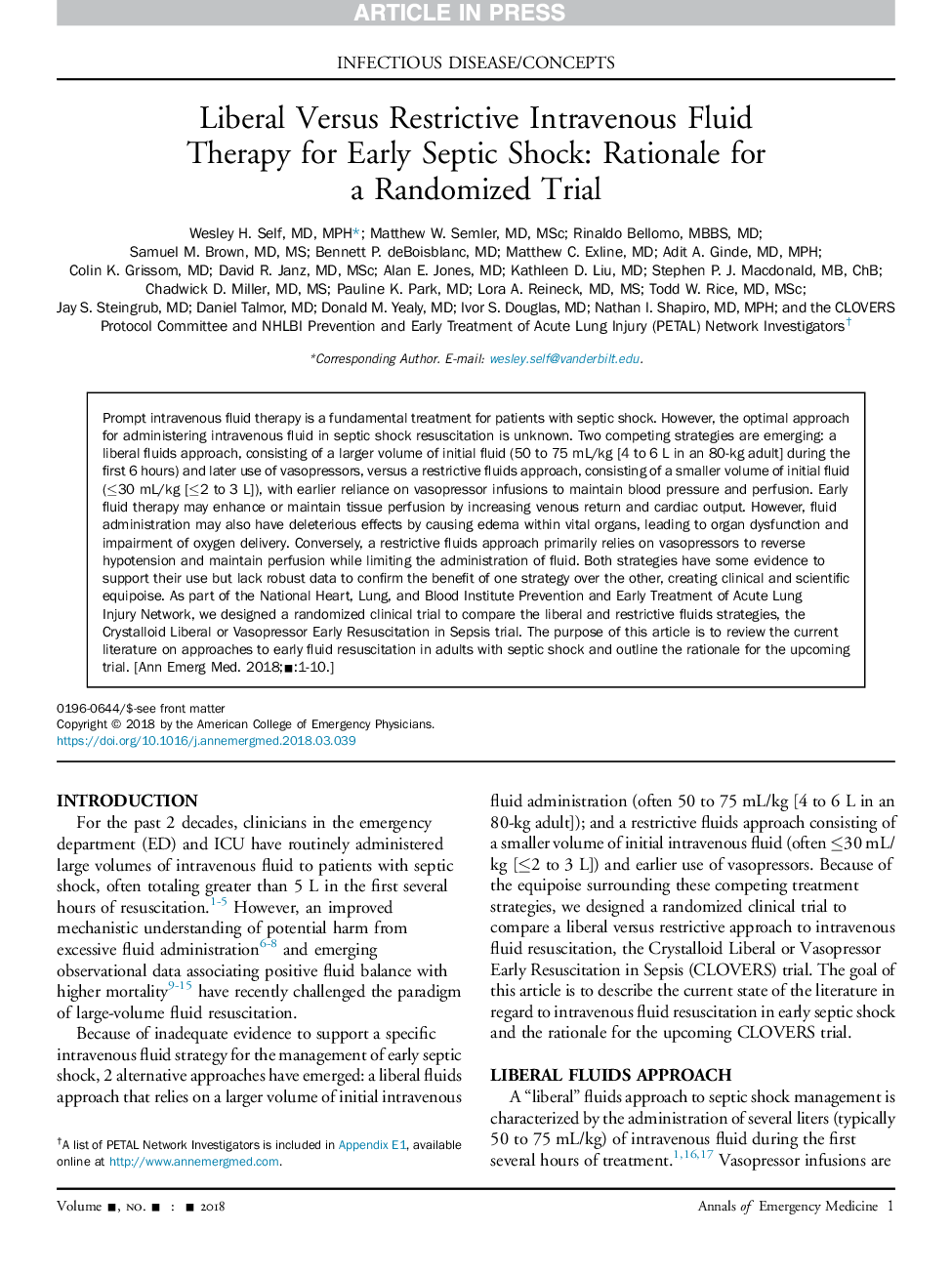| Article ID | Journal | Published Year | Pages | File Type |
|---|---|---|---|---|
| 10217268 | Annals of Emergency Medicine | 2018 | 10 Pages |
Abstract
Prompt intravenous fluid therapy is a fundamental treatment for patients with septic shock. However, the optimal approach for administering intravenous fluid in septic shock resuscitation is unknown. Two competing strategies are emerging: a liberal fluids approach, consisting of a larger volume of initial fluid (50 to 75 mL/kg [4 to 6 L in an 80-kg adult] during the first 6 hours) and later use of vasopressors, versus a restrictive fluids approach, consisting of a smaller volume of initial fluid (â¤30 mL/kg [â¤2 to 3 L]), with earlier reliance on vasopressor infusions to maintain blood pressure and perfusion. Early fluid therapy may enhance or maintain tissue perfusion by increasing venous return and cardiac output. However, fluid administration may also have deleterious effects by causing edema within vital organs, leading to organ dysfunction and impairment of oxygen delivery. Conversely, a restrictive fluids approach primarily relies on vasopressors to reverse hypotension and maintain perfusion while limiting the administration of fluid. Both strategies have some evidence to support their use but lack robust data to confirm the benefit of one strategy over the other, creating clinical and scientific equipoise. As part of the National Heart, Lung, and Blood Institute Prevention and Early Treatment of Acute Lung Injury Network, we designed a randomized clinical trial to compare the liberal and restrictive fluids strategies, the Crystalloid Liberal or Vasopressor Early Resuscitation in Sepsis trial. The purpose of this article is to review the current literature on approaches to early fluid resuscitation in adults with septic shock and outline the rationale for the upcoming trial.
Related Topics
Health Sciences
Medicine and Dentistry
Emergency Medicine
Authors
Wesley H. MD, MPH, Matthew W. MD, MSc, Rinaldo MBBS, MD, Samuel M. MD, MS, Bennett P. MD, Matthew C. MD, Adit A. MD, MPH, Colin K. MD, David R. MD, MSc, Alan E. MD, Kathleen D. MD, Stephen P.J. MB, ChB, Chadwick D. MD, MS, Pauline K. MD, Lora A. MD, MS,
